An introduction to an underappreciated and almost unknown fishing in New Zealand: fishing for sea run trout.
It was still dark when we left the car and followed the path along the river towards the sea. The spring air was crisp and a light south-west wind carried a salty hint. As we got closer to the mouth the sound of waves crashing onto the beach became louder, a slight glow to the east promised welcome warmth later in the day. The path eventually turned from gravel to sand, seagulls were visible working the incoming tide. In the feint light the odd splash could be seen disturbing the calm water close to the edge. Other splashes, not visible in the low light, could be heard further out in the current.
The wind carries a cast out into the pushing tide, an upstream mend allows the sink tip to guide the fly into deeper waters. I begin to retrieve as the line starts to swing, a familiar rhythm. I imagine the fly moving nervously along just off the sandy bottom watching for movement out of the corner of its eye.
On the third cast the rhythm of my retrieve is interrupted as an unseen foe realises its error. It turns and runs strongly with the tide water, backing fizzes through my fingers. Out in the current silver breaks the surface-once, twice, and once more. It then bores deep as I try guide it out of the current and into the slack water. Slowly I regain my backing, then my fly line as the runs become shorter and shallower.
I begin to make out the shape of a silver ghost in the shallows and soon guide it over the net. Perfect fins twitch and shiver, the silver body scattered with small black markings. I ease the hook out of the corner of her mouth and gently slide her back into the salt water. I catch a glimpse and she glides over the drop-off into the depths.
The mystery
When I arrived in Southland a few years back I was immediately amazed at the amount of trout fishing that is available within the southern-most province of New Zealand. Through a bit of luck I had landed in trout fishing heaven with more streams, rivers and lakes than I could fish in a lifetime, all full of trout.
The quality of trout fishing on the south island of New Zealand is well known the world over, with many a south island brown gracing the covers of fly-fishing magazines around the world. Sight fishing to large wary trout in crystal clear back-country rivers is what keeps people coming back to New Zealand year after year. The south island offers significantly more than just this though, with opportunities to fish spring creeks, lowland streams, lakes and tarns, estuaries and lagoons.
It wasn't long before I took an interest in sea trout known locally as searunners. I was intrigued by the lack of information on them and wondered why so few people specifically fished for them where I lived. Google searches turned up very little on these elusive creatures, the odd article here a couple photos there. To make these creatures even more mysterious were bits of information about a few truly exceptional trout being caught in the estuaries over the years.
I did find a couple knowledgeable locals who were happy to share years of advice on when, where and how to target these trout.
The information I had gathered gave me a general direction, which was enough for a start. What followed were many hours with only the odd fish to show for my time. Things did however slowly start to make a bit of sense. I highly doubt I will ever completely understand the finer details of these fish but that is in itself their finest quality. In a world where Google can answer almost all of your questions it is comforting to know there is still some mystery left in the world, for those that know where to look.
Where and when to find them
From my perspective there seem to be two distinct habitat types in Southlands estuaries- saltwater habitat close to the sea and the fresh but tidal influenced upper reaches. The lower zone is closer to the sea with a higher salinity and generally has a sand or rocky bottom. My experiences to date lead me to think that trout within this area seem to be very mobile- staying in one location for a day or two and then disappearing off the face of the planet for weeks- or so it seems! Trout within this habitat share the water with barracouta, red cod, mullet, even dolphins occasionally!
Trout I have caught in the salt have been bright silver with few or no spots on their gill plates, very much like sea trout from Europe. Fish I have kept have had juvenile red cod, whitebait and sprats in their stomachs- pretty strong evidence that they are making the most of saltwater prey species. Locals in the know have also indicated that these fish will also feed on flounder, juvenile eels, lamprey and crabs. These trout are the ones fascinate me most-fish that have chosen to risk seals, dolphins and sharks to take advantage of the saltwater prey.
When I only have couple hours free I'll often head to the upper tidal reaches of the local estuaries. This area tends to be more consistent with willows and weed beds presumably providing a more stable environment for trout. Trout I have caught in these areas tend to look more like river trout and generally lack silver colouring of fish living closer to the sea. I've had my best results in the upper tidal areas over the spring and summer months but have caught the odd fish in May and even June.
Equipment
Rods - Due to the often strong winds found down here I have found heavier weight fly rods are an advantage when fishing these areas. My rod of choice is 8 weight Temple Fork Outfitters BVK- nothing fancy but it comfortably handle bigs flies, strong winds and shooting-head style fly lines. This may seem like overkill for fish that average in the 3-8lb range but i have found it the most efficient way to get a fly in front of a fish in what can at times be rather difficult conditions. You also never know when you are going to hook a 10lb plus trout, kahawai (Australian salmon), barracouta (cape snoek) or even a King salmon while fishing these locations.
Lines - If I had to choose two lines for this type of fishing one would be a fast sinking shooting head (with a floating running line) and the other a clear intermediate.
The clear intermediate is great when trout are targeting baitfish close to the surface, which is often the case in the upper tidal zone, especially in early morning and evening. Although these fish can be seen feeding close to the surface they can also be very finicky. A single misplaced cast is enough to put them down. In these conditions a more subtle fly line, such as a clear intermediate is an advantage.
The shooting head comes into its own in close proximity to the sea where strong tidal currents make getting down to the fish difficult. Although it is relatively common to see the odd fish feeding on the surface at times I am fairly certain that the deeper I can get my fly the more success I have. The ability to mend the running line, thus allowing the tip to sink without drag, gives you the opportunity to get your fly down to where the fish are. Sink tips in the 18-20ft range should be able to get your fly down 6-8ft in a reasonable current.
Occasionally, at the top of the tide, trout will move into the shallow edges to chase baitfish, at which time a full floating line is useful. Often this will involve fishing over the top of weed and flooded grass and a floating line with a long leader will allow a more delicate presentation to fish in the shallows, while not sinking into the weed.
Flies
These are the flies that, over the last few seasons, I have had the most success with. Although specific patterns are valuable I try focus on qualities such as shape, movement, weight and action when tying flies for sea trout. I can then choose the appropriate hook, materials and weighting to allow me to create a fly that does exactly what I want it to do. Other considerations are how well the fly will cast and durability of the hook and materials. There is nothing more frustrating than having the first trout of the morning destroy your fly, or all the flies in your box begin rusting because you tied them on hooks made for freshwater use.
In most cases these purpose-designed flies have their origins in established patterns. An example of this is found below with the Grey Fred. My version of this great fly does not make use of grizzly marabou, the main ingredient in the fly, mainly because I can't fine the stuff. My version, tied with grizzly craft fur, does however have the same overall appearance as the original. Strictly speaking it is not a true Grey Fred, but out of respect for the original pattern I have stuck with the name.
1. Grey Fred
- This fly has been by far the most consistent producer in the last few years, catching fish in a variety of locations and conditions. It makes a great general baitfish imitation and covers a variety of species that trout feed on in New Zealand waters.
I generally tie these on a Gamakatsu SP11-3L3H size 2 hook. These hooks are super-sharp, strong and salt water resistant. I tie some of with bead chain eyes and others with dumbbell eyes for extra weight. The extra weight of the dumbbell eyes not only provides a faster sink rate, but also gives the fly a jigging action when retrieved. Having a few options on the day prove useful when the fish are playing hard to get.
It also pays to keep a few slightly smaller Grey Freds in your box. These can be useful in calm conditions when trout will follow larger flies but not commit. Smelting trout in the upper tidal reaches can get really picky and dropping down in fly size can make the difference in these circumstances.
2. Black Woolly Bugger
- This fly comes into its own in the early mornings and late evenings but will take fish throughout the day. I also tie these on the above-mentioned Gamakatsu hooks, some with bead chain eyes, others with dumbbells. A number of variations- with or without flash, black or white rubber legs or none, weighted or unweighted all seem to work.
3. Yellow/Chartreuse Woolly Buggers
- This colour seems to be the only bright-coloured fly that I have found to work consistently. It seems the magical chartreuse love affair holds true for sea trout in New Zealand as much as it does for all the other saltwater gamefish that eat a fly. Many of the traditional Canterbury sea trout/salmon flies have some yellow in them which also adds weight to the theory.
4. Small Sparse baitfish pattern
- The specific pattern doesn't seem to make much difference, as long as it's sparse. These flies imitate the whitebait (juvenile galaxids) that migrate into the rivers every spring and summer. The pattern I use is a sparse clouser minnow with a pearl body and grey-white synthetic wing tied on a size 6 or 8 saltwater hook
Whitebait holds a special place in Kiwi culture, with many locals using fine nets to catch the little fish, which are then eat or sold. On some rivers locals will catch over a ton of whitebait in a season, which at up to $120/kg makes for a rather lucrative business.
Considering the value of this unusual commodity there is always a degree of competitiveness and jostling on the river with some whitebaiters accusing others of stealing "their spot" or placing their nets too far into the river. They don't however seem to mind sharing their area with the odd angler, as long as you give them a bit of space. In fact they are often a very useful source of information and will share their local knowledge with a friendly fisherman.
5. Articulated streamers
- At times, when trout are feeding on larger prey, larger articulated streamers can also work well. In the spring some rivers see an influx in juvenile red cod in the 4-8 inch range and trout make the most of this. Specific patterns don't seem too important with anything in black, grey and yellow/chartreuse being worth having in the fly box.
How to
The best time season to target sea trout is during the spring and summer months. As water temperatures drop in autumn many of the trout head upstream to spawn and those that stay don't seem to to feed as heavily in the cooler waters.
The prey species on which the trout feed will vary through the season, with whitebait and juvenile red cod being on the menu in spring. As spring becomes summer the whitebait tail off and are replaced by smelt- these prolific little fish will stay in the estuaries right into the autumn. In addition to smelt during summer other baitfish such as silversides/sprats will also move into the river mouths from the sea. Late summer sees another migration of adult whitebait (galaxids) back into the tidal zone to spawn.
Apart from these migratory prey species there are also more year round options such as bullies, baby flounder and crabs available to trout.
The next thing factor to consider is the time of the day. I have found that there is significantly more action in the early morning and late evening. On a number of occasions I have arrived at a spot at first light, had a great hour of fishing, after which trout became much harder to catch. Night fishing is also an option if you are that way inclined.
Tides also play a vital role in understanding where and when to fish. I have noticed my best fishing in the upper tidal reaches is when a high tide coincides with first light- In these conditions it is possible to have some amazing top-water action. Closer to the sea I prefer to fish the last half of the dropping tide and the first half of the incoming tide. The low tide tends to concentrate fish in the channels and also allows easier access to this holding water.
Another factor, which seems to have more of effect on trout than any of the aforementioned variables is wind direction. Westerly to south-westerly winds tend to bring fish on to the feed and easterlies tend to put the fish down. One session which made this very clear was last summer at the mouth of a local lagoon.
A friend and I had arrived at first light and had fished for a good two hours without as much as a bite. Considering the relatively high population of trout in this location and sprats that were following the tide into the lagoon the lack of action was puzzling. Terns and gulls made the most of the small baitfish and could be seen picking them off at will in the current. The only possible cause for the lack of action, that I could make out, was a very light easterly breeze that had been blowing all morning. Just as we were about to call it a day the wind switched to a south-westerly. Within minutes fish were visible feeding on the surface and success soon followed.
The thoughts above are merely my observations over the last few years, and are far from the last word on the topic. They may however assist in providing a start point for other interested in targeting these incredible fish.
So if you have ever thought about planning a trip New Zealand why not mix it up a bit and try a bit of sea trout fishing. After all you can only sight fish to so many huge backcountry browns before it gets a bit tedious… Ok maybe not, but they do say variety is the spice of life!
- Log in to post comments

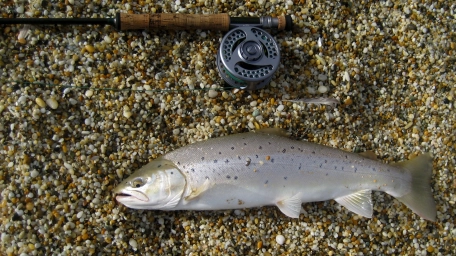
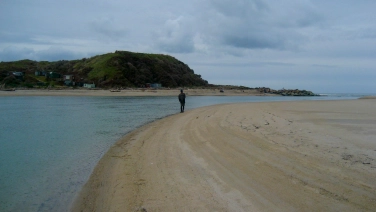
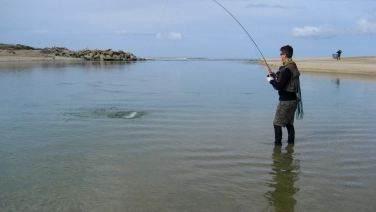
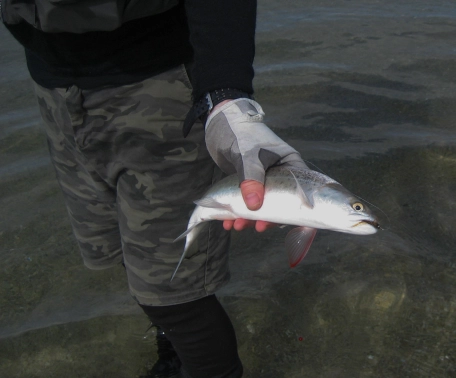

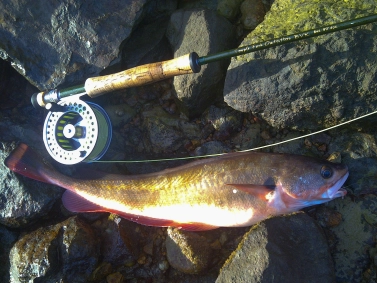
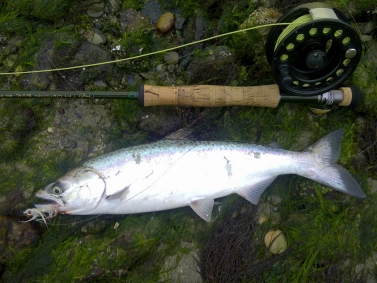
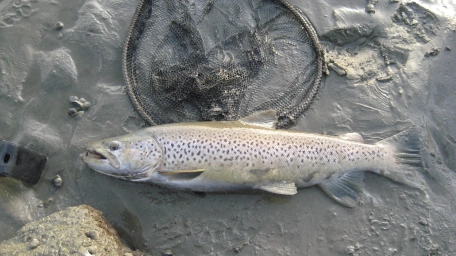

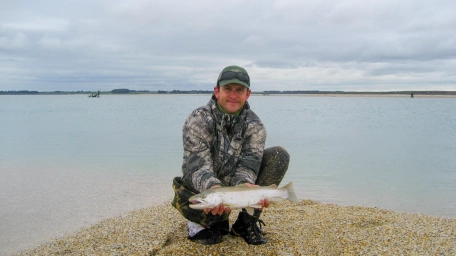
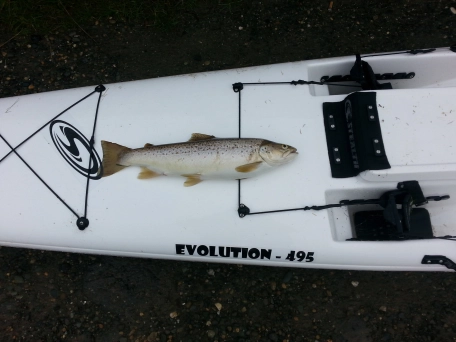
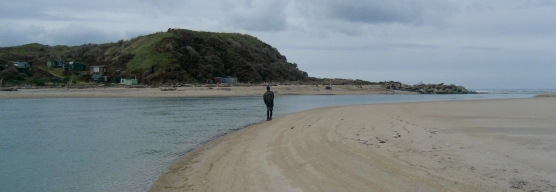
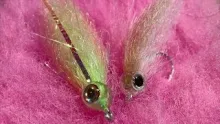
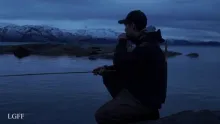


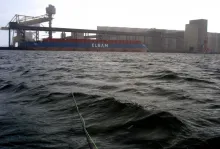
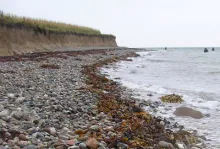

Hi Jared, Thanks for
Hi Jared, Thanks for a really great and informative article. I have intermittently been targeting Seatrout in the North island, and also occasionally on trips to the South island, without a great deal of success. I will be trying some of your tactics on future trips. I have spent many many hours fishing the lower reaches of the Waikato river, which sure as hell looks like there should be a few Seatrout around, only to finally conclude that there are virtually none present (backed up by a recent Fish&Game survey). I have also caught a few big, really healthy bright silver fish, well inland on the Whanganui river, which suspect are Sea-run trout returning to spawn.
As an angler who grew up in England I have always considered Seatrout to be the very finest of fish to catch on a fly and would encourage any visitor to New Zealand to target them.
Great article thanks
Great article thanks. Check out my blog fly-fishing the world.blogspot.com for similar NZ stories! I live in Christchurch New Zealand